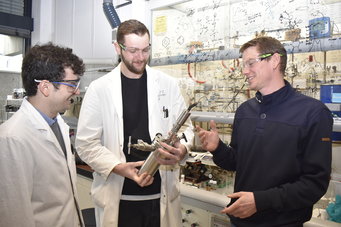The NSW Government has reinforced its commitment to reducing pressure on NSW public hospital emergency departments, in its response to a parliamentary inquiry into ambulance ramping and access block.
NSW Health Minister Ryan Park said there was full or in-principle support for 10 of the inquiry’s 12 recommendations, after the NSW Government tabled its response to the report in parliament today.
“The NSW Minns Government inherited a health system that is straining under the pressure of record patient presentations to emergency departments and record ambulance call outs,” he said.
“We know patients can suffer when our EDs are overcrowded and there are delays in the transfer of care from our paramedics to our hospital clinicians.”
Demand for health services, including emergency medical care, has grown exponentially over the past few years, especially during the COVID-19 pandemic.
More than 3 million patients present to NSW public hospital emergency departments each year.
In 2021 and 2022, emergency department attendances for the most urgent triage categories, triage category 1 and triage category 2, increased faster than less urgent categories.
In the same period, demand for ambulance services reached new record highs.
Health Minister Ryan Park said it was clear unprecedented demand for urgent medical care and the flow of patients through hospitals contributed to ramping and wait times in emergency departments.
“That’s why the NSW Minns Government is committed to reducing the strain on EDs through the rollout of 25 Urgent Care Services across NSW, as well as innovative solutions like our virtual care services.
“The NSW Government is also committed to implementing safe staffing levels in our hospitals, starting in our emergency departments.
“We have committed $175 million to recruit an additional 1200 nurses into the healthcare system by 2027.
“We’re also committed to hiring another 500 paramedics to be based in regional and rural NSW.”
The 10 recommendations supported by the NSW Government include:
- The provision of dedicated paramedic work zones, protected from the elements
- The abolition of the public sector wages cap to ensure fair wages for healthcare staff and improved productivity and provision of services
- Manage, support and monitor system-wide patient flow and performance.
A recommendation to reduce patient occupancy to 85% is noted, on the basis NSW public hospitals are jointly funded by the State and Federal Governments on an activity based funding model in accordance with the National Health Reform Agreement.
NSW Health is currently engaged with the Commonwealth and other jurisdictions on a mid-term review of the National Health Reform Agreement.
A recommendation to remove location limits to allow extended care paramedics and intensive care paramedics to retain their qualifications if they transfer to a regional location is not supported.
This recommendation is not supported because not all regional locations have sufficient workload or activity to ensure these paramedics are able to maintain their specialist accreditation.
Work is continually underway within NSW Health to address a number of the committee’s recommendations to reduce pressures on hospitals.
The NSW Ministry of Health works closely with local health districts, specialty health networks and NSW Ambulance to monitor the transfer of care of patients from paramedics to emergency departments.
NSW Health is also undertaking a range of work with NSW health services and Commonwealth partners to address the factors that impact the transfer of care, including enabling greater access to aged care facilities, enhancing NDIS placements and improving access to primary care for patients.





